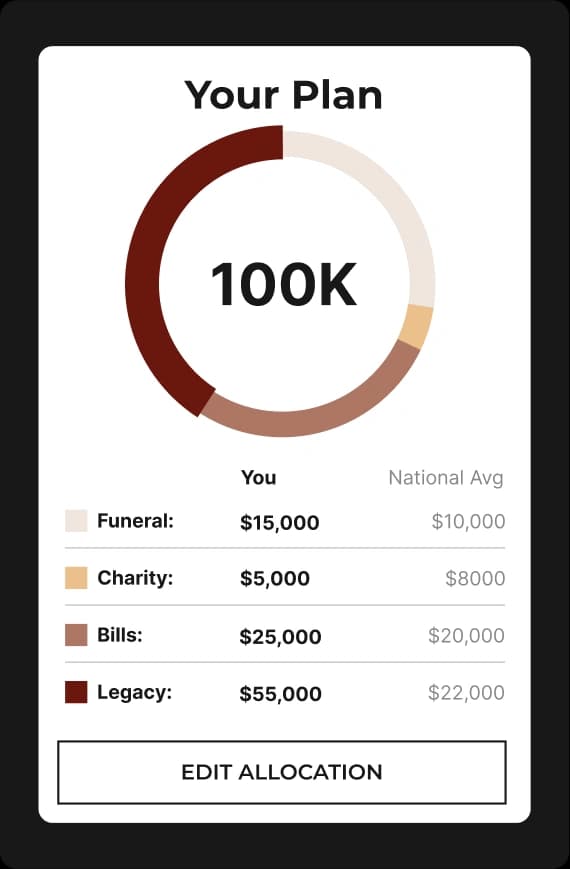How Medicare Works: The Ultimate Guide
SHARE THIS
Trying to understand how Medicare works can be challenging. There are different components, prices, qualifiers, and multiple other variables that can become confusing. It’s worth taking the time to understand the ins and outs of Medicare as you near or are entering retirement because Medicare offers an alternative to more expensive privatized health insurance plans.
As a plan for individuals, Medicare doesn’t offer a family plan, which means you have to meet the qualifications for coverage on your own. However, Medicare makes it easy to customize and optimize your coverage for your individual needs. Once you turn 65, you become eligible for Medicare, so if you’re approaching that age or already are 65, now is the time to learn how Medicare works.
In this guide to understanding Medicare, we’ll dive deep into the details so you’ll be able to answer, “how does Medicare work?” Don’t get yourself lost in a maze of terminology and definitions. We’ve compiled this ultimate guide to how Medicare works specifically to make it easier to grasp, enabling you to make informed decisions about your future.
Understanding how Medicare works begins here. Let’s jump in.

It’s more than insurance. It’s a comprehensive plan.
Our life insurance solutions are custom designed to provide the best and most affordable protection for the 50+ generation.
- No Medical Exams
- Instant Approval
- Purchase Today - 100% online
By answering a few simple questions, you’ll have a personalized coverage solution that matches your specific needs in just minutes.
How Does Original Medicare Work (Parts A and B)?
Before we fully understand how Medicare works, we need to differentiate between the different parts of Medicare. Medicare has four parts, but only Medicare Part A and Medicare Part B are known as Original Medicare. How does Original Medicare work? Original Medicare covers most health care costs you’ll face. Hospital stays, hospice, doctor visits, lab tests, and just about any other expenses you’ll encounter in maintaining your health are mostly covered by Medicare Part A and B. You’ll still have to pay some costs or portions of expenses out of pocket, though. Let’s dive a little bit deeper into Medicare Parts A and B to learn more.
Medicare Part A
Medicare Part A is one part of Original Medicare, and it covers several different healthcare services. These include inpatient hospital care, skilled nursing facility care, inpatient nursing home care (not including long-term care), hospice care, and home health care. Most people 65 and older are covered by Medicare Part A get premium-free coverage if they paid into Medicare while working. You will have had to pay Medicare taxes through your employment for a certain amount of time to qualify. You can also be eligible for premium-free Medicare Part A if your spouse paid into Medicare during their career. If you already receive social security, you are eligible for premium-free Medicare Part A. However, if neither you nor your spouse paid into it during your working years, you can still buy Part A. You’ll pay a premium each month that depends on how long you paid into Medicare while working, if at all. The full Medicare Part A premium in 2022 is $499 per month, and you’ll be required to have Medicare Part B as well.
Medicare Part B
Medicare Part B covers regular doctor visits, mental health costs, outpatient surgery, ambulance services, lab tests, wheelchairs, crutches, and other medical equipment. You are eligible for Medicare Part B if you are receiving Social Security and have a disability no matter your age. Your Part B premiums are deducted from Social Security benefits, Railroad Retirement Board Benefits, or Office of Personnel Management benefits. Otherwise, you will have to pay your premiums out of pocket. The standard premium amount in 2022 is $170.10, but the amount of your premiums will depend on your income in previous years. Medicare Part B has a deductible. When we look at how Medicare deductible works, you’ll see it’s $233. After that, you’ll pay 20% of the Medicare-Approved Amount for doctor services, outpatient therapy, and medical equipment.
How Do Medicare Advantage Plans Work (Medicare Part C)?
Medicare Advantage Plans or Medicare Part C are healthcare coverage bundles that often include everything in Medicare Part A and Medicare Part B and Medicare Part D. These plans are offered by private insurance companies that have been Medicare-approved and follow the rules set out by Medicare. Medicare Advantage Plans may come with a premium you’ll pay in addition to your monthly Medicare Part B premium. You’ll also be restricted from purchasing supplemental health insurance such as Medigap. There are several options when it comes to bundled Medicare Advantage Plans. These options include Health Maintenance Organization Plans, Preferred Provider Organization Plans, Private Fee-for-service Plans, and Special Needs Plans. Let’s take a closer look at how Medicare Advantage plans work and what these different types of Medicare Advantage Plan Bundles include.
Health Maintenance Organization (HMO) Plans
Health Maintenance Organization Plans are a type of Medicare Advantage Plan that includes everything covered in Medicare Part A and Medicare Part B. If you choose an HMO plan, you’ll have to select a primary care doctor and seek referrals to see specialists. Generally speaking, you’ll be limited to service providers within your plan’s network, except for emergency care, out-of-area urgent care, and out-of-area dialysis. If you seek treatment or care outside the plan’s network, you will have to pay out of pocket. Medicare Part D is often included in these plans, which means you can have your prescription drugs covered with HMO insurance bundles.
Preferred Provider Organization (PPO) Plans
A Preferred Provider Organization Plan is a healthcare insurance plan in which the insurers have negotiated lower rates for services for their plan subscribers. Unlike a Health Maintenance Organization Plan, you do not have to choose a primary care doctor with a PPO plan. You also don’t have to get a referral to see a specialist. If you visit doctors or specialists outside your plan’s network, you will have to pay higher prices. Some PPO plans come with a deductible, and they often require a copayment for healthcare services. Many people choose PPO plans because it gives them the freedom to choose care providers in or out of network, which means you can stick with the doctors and professionals you’ve come to know and trust, even if they are not in your plan’s network.
Private Fee-for-service (PFFS) Plans
Private Fee-for-service Plans are another form of Medicare Advantage Plans, but these plans differ from HMO, and PPO plans in that they determine how much you pay when you get care. It is up to the doctors or healthcare providers to decide whether they accept patients with PFFS plans. Like a PPO plan, a PFFS plan does not require that you choose a primary care doctor. You also won’t need a referral to see a specialist. However, some PFFS plans do not cover prescription drugs. If you’ve chosen out-of-network providers, there is a chance your care will not be covered under a PFFS plan.
Special Needs Plans (SNPs)
A Special Needs Plan is a Medicare Advantage Plan strictly for those with specific conditions. With an SNP, your benefits are customized to your particular needs. Depending on your SNP, you may have coverage outside of your plan’s network, and you may not. It’s best to check these details before settling on a plan for you. SNPs include specialists for the specific conditions of plan subscribers, and all SNPs must cover prescription drugs or Medicare Part D. As part of your SNP, you will have to choose a primary care doctor, and you will have to get a referral from your primary care doctor to see a specialist. Examples of eligible people for this type of Medicare Advantage plan are men and women in nursing homes, people who have diabetes, end-stage renal disease, HIV/AIDS, chronic heart failure, or dementia.
Medicare Part D
Medicare Part D is prescription drug coverage. Subscribers pay a monthly premium to your insurance provider, and in exchange, your insurance provider will cover most of your prescription drug costs. You will still be responsible for paying a copay for your prescriptions dependent on the type of drug you are purchasing. For instance, brand-name drugs will have a higher copay than generic drugs. Your prescription drug purchases will be restricted to your Part D plan’s network of pharmacies. Medicare Part D plans must all follow the rules set out by the federal government and must be approved federally every year. Your plan may come with an annual deductible, although some Medicare Part D plans waive the deductible altogether. Medicare Part D can be included in a Medicare Advantage Plan, depending on the Advantage plan you choose.
Additional Medicare Coverage
There are several other ways to get your healthcare coverage through Medicare. They include Medicare Medical Savings Accounts, Medicare Cost Plans, and the Medicare Savings Program. Each of these forms of additional coverage comes with its own eligibility rules, coverage, and costs and has numerous advantages and disadvantages. Let’s take a closer look to find out how these additional forms of coverage work.
Medicare Medical Savings Accounts (MSAs)
Similar to Health Savings Accounts (HSAs), Medicare Medical Savings Accounts (MSAs) are for people who are under 65. MSAs combine two different plans. The first of these plans is a high-deductible Medicare Advantage (Part C) plan. The second is a Medical Savings Account set up to pay for health-related costs that come up before meeting your deductible in the Medical Advantage Plan you subscribe to. MSAs cover everything that Medicare Advantage Plans cover and may include additional benefits for vision, dental and more.
Medicare Cost Plans
Medicare Cost Plans may not be available in all areas of the USA, but in areas where they are, these plans are open to those with Original Medicare or just Part B. The benefits of Medicare Cost Plans is that they give you the option to choose out-of-network care. Cost plans under Medicare are supplemental, designed to operate with your original Medicare coverage, so you have more benefits.
Medicare Savings Program (MSP)
Medicare Savings Program (MSP) is designed to assist seniors with financial need to pay the premiums for their Medicare benefits. Qualifiers include income limits and a cap on the value of assets you might have to your name. MSP can help seniors in need pay their copayments, deductibles, and the cost of medication.
How do Medicare Supplement Plans Work?
How does supplemental Medicare Insurance work? Medicare Supplement Plans are also sometimes known as Medigap and, as the name suggests, serve the purpose of filling gaps in medical coverage. Private insurance providers offer this type of coverage and may cover some of your out-of-pocket costs associated with health care. For instance, your Medigap insurance may cover copays, deductibles, coinsurance, and more. Some Medigap policies may cover you when you travel, as well. To qualify for a Medicare Supplemental Plan, you must already be enrolled in Medicare A and B. You’ll have to pay a monthly premium in addition to your Part B premium, and you’ll only get coverage for one person.
How Does Medicare Work With Employer Insurance?
How does working affect Medicare? When looking at how Medicare works with other insurance, such as employer benefits, coordination of benefits will decide who pays first or becomes the primary payer. Each provider is referred to as a payer, and your primary payer will pay for what you’re covered for first. A secondary payer may pay the remainder or parts of it. So, the primary payer will pay until it reaches your coverage limits, and the secondary payer will only cover the remainder. It’s essential to know the extent of your coverage from each provider, as, in some cases, the secondary payer may not cover all of the remaining costs after the primary payer has covered what they owe. In the case of a group health plan through work, your group coverage will be the primary payer if your employer has more than 20 employees covered. These are the basics of how Medicare works with employer insurance but the finer details may vary from plan to plan.
How Does Medicaid Work with Medicare?
How does Medicare coverage work with Medicaid? Medicaid is always the last payer when you have multiple sources of health care coverage. If you have both Medicaid and Medicare, Medicare is the primary payer while Medicaid is the secondary payer. If you have a third source of health care benefits, then Medicaid becomes the last payer. Known as a “payer of last resort,” Medicaid is always the final payer no matter what other coverage you may have. If you have Medicare and Medicaid, you will be enrolled in an MSP to receive premium assistance if need be. Medicaid may also cover your copays, deductibles, and coinsurance.
How Does Medicare Open Enrollment Work?
Medicare Open Enrollment is a period that occurs every year during which Medicare beneficiaries can freely enroll in, switch or drop Medicare Part D. This period runs from October 15th to December 7th, and the coverage you settle on will begin on Jan 1st of the following year. You must be 65 and older and enrolled in Part A and Part B to take part in open enrollment, and you’ll also need to live within the boundaries of the service area of your new plan. The disenrollment period is from January 1st to February 14th, during which time you can choose to drop Medicare Advantage in favor of Original Medicare if you wish. If you choose to add Part D during this time, a late enrollment fee could apply.
If you want to change your plan during the next open enrollment period, get yourself prepared. While it doesn’t matter when during the open enrollment period you make changes, make sure you give yourself enough time to compare and contrast plans before making your selection. That way, you can make your changes before the deadline on December 7th.
Our content is created for educational purposes only. This material is not intended to provide, and should not be relied on for tax, legal, or investment advice. Everdays encourages individuals to seek advice from their own investment or tax advisor or legal counsel.




